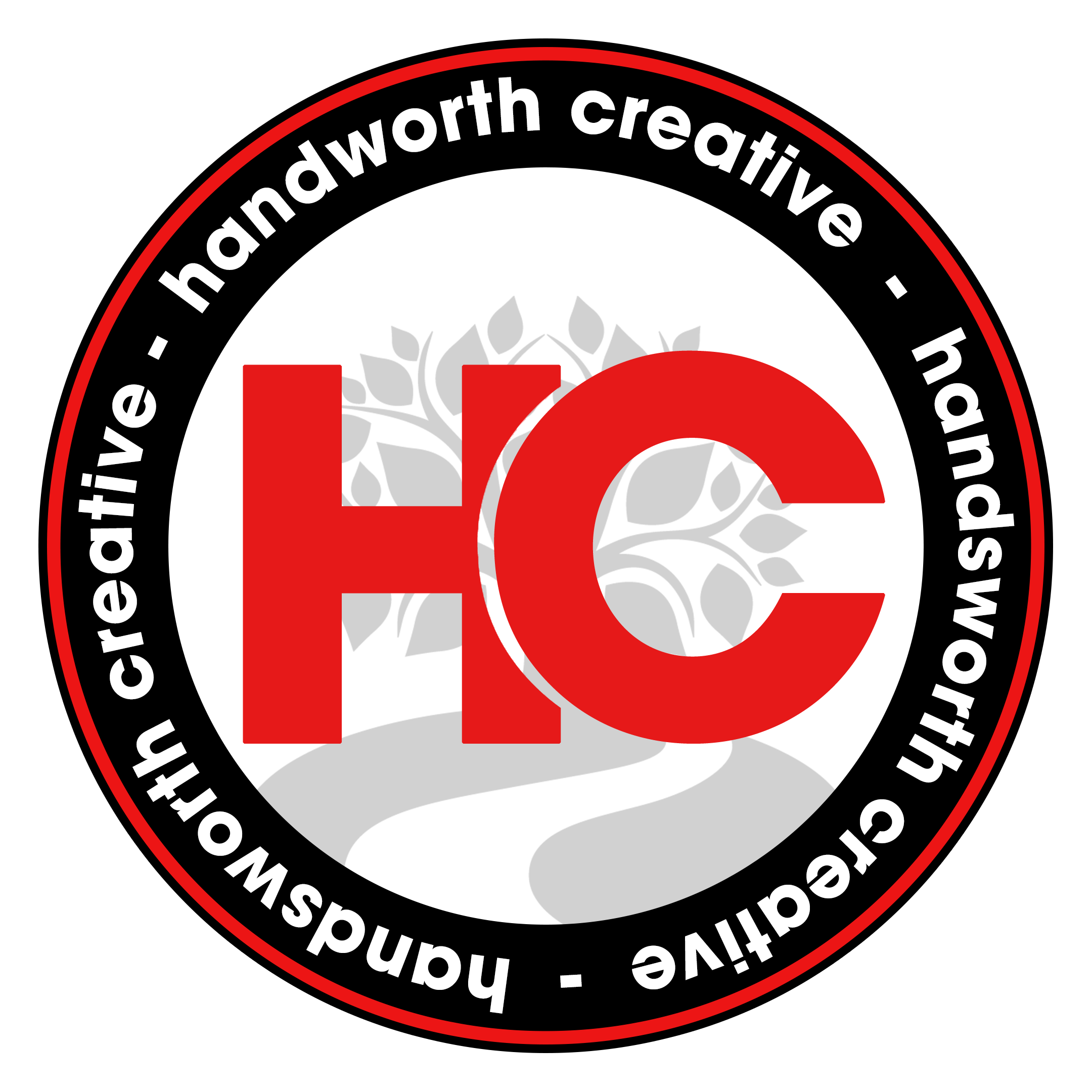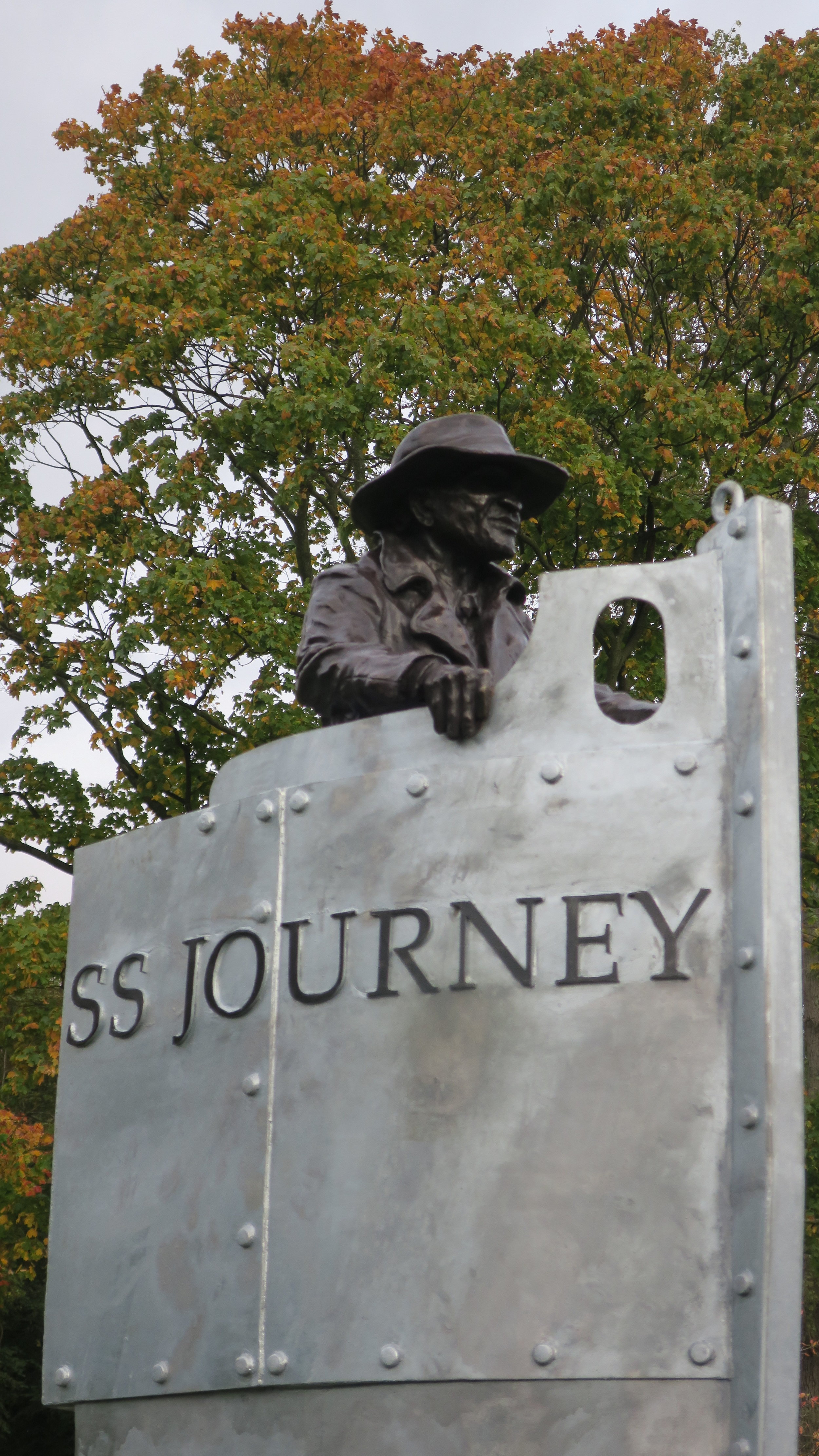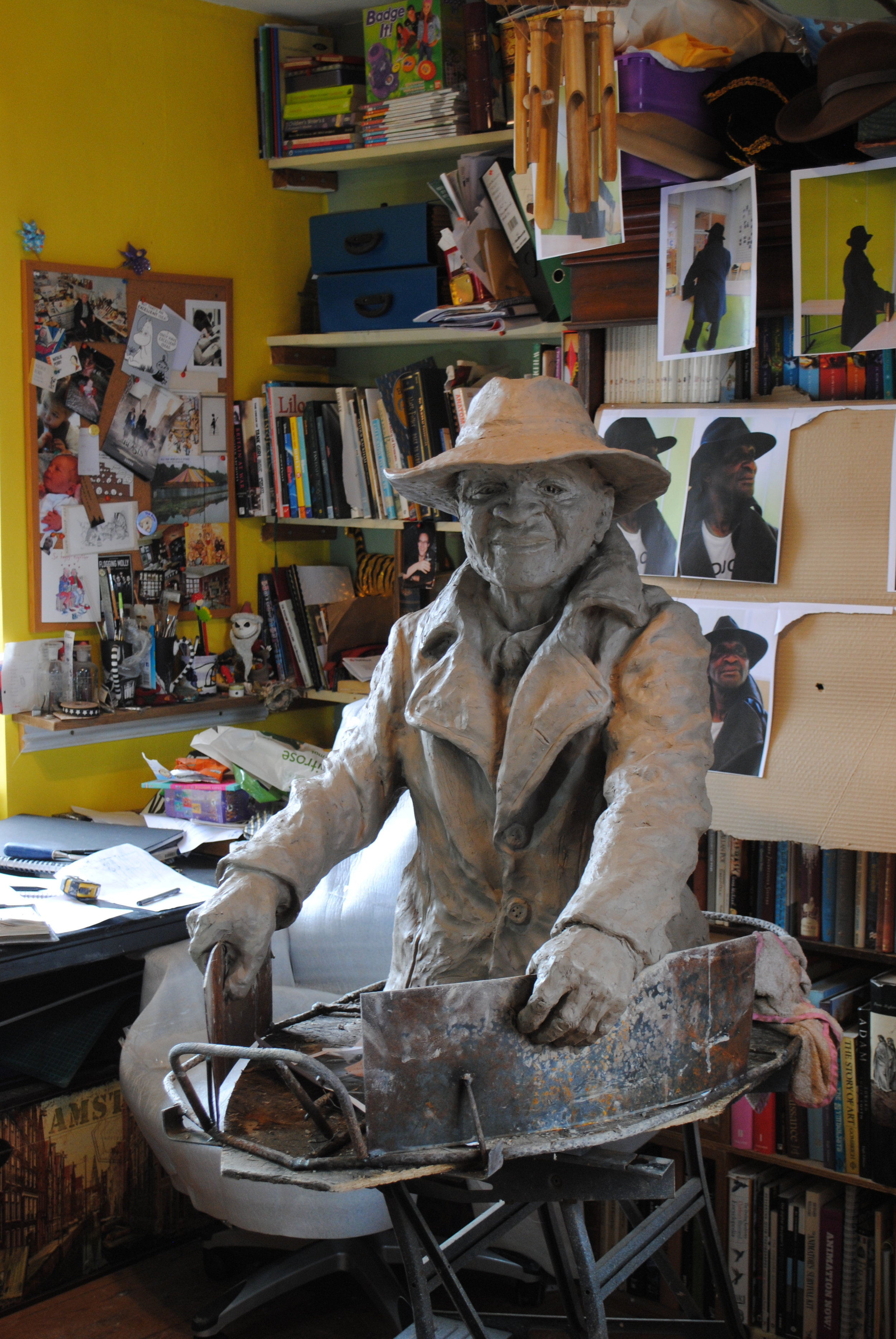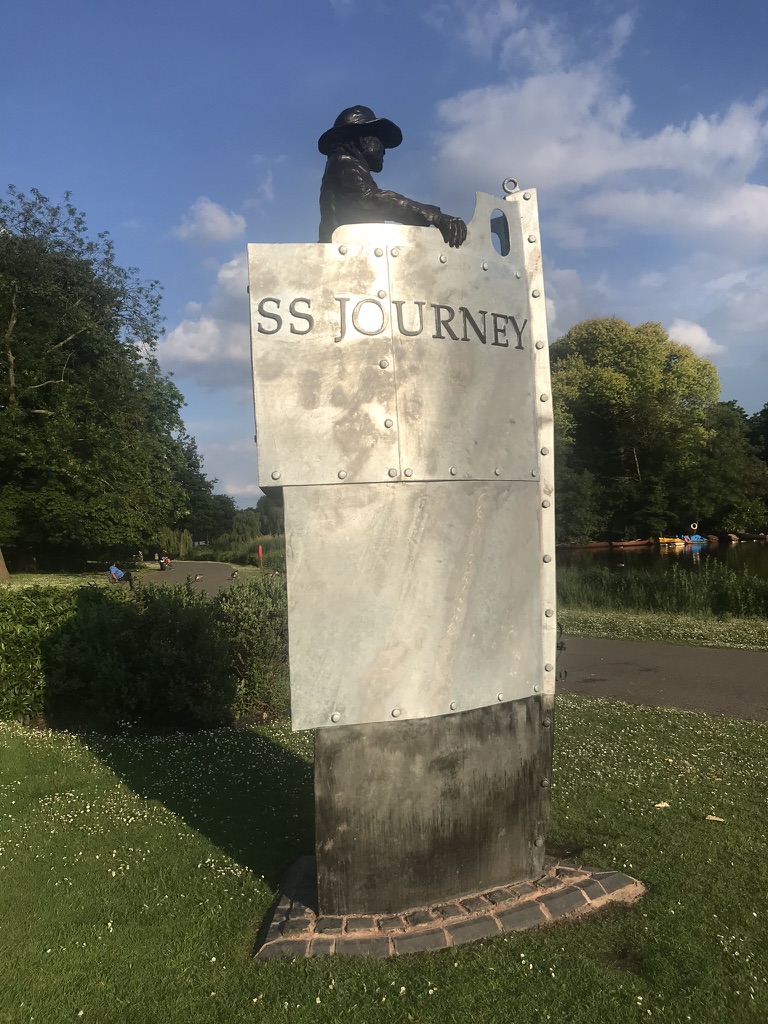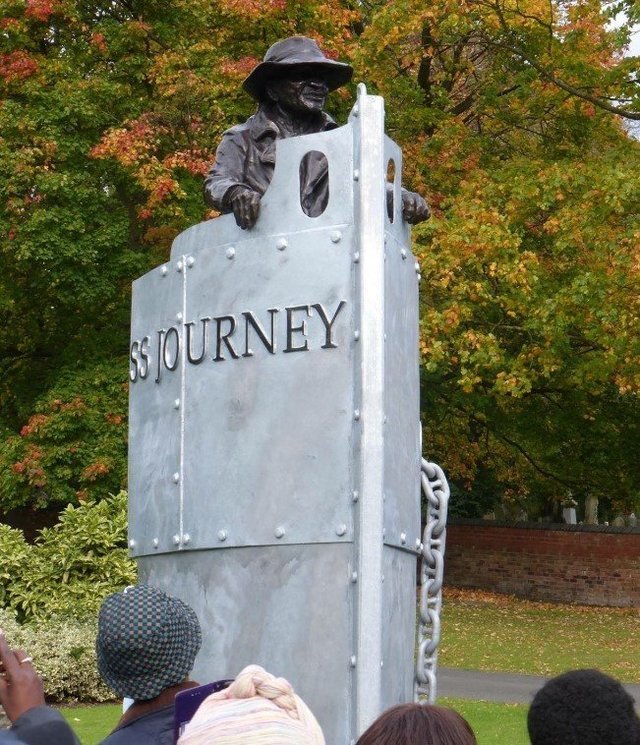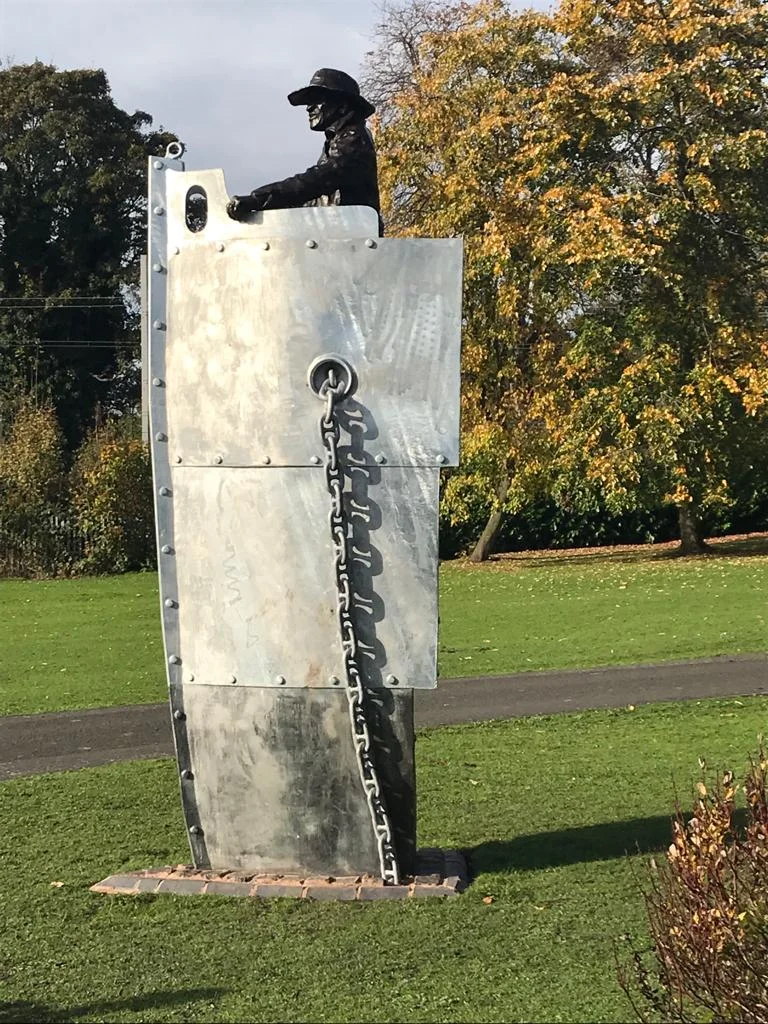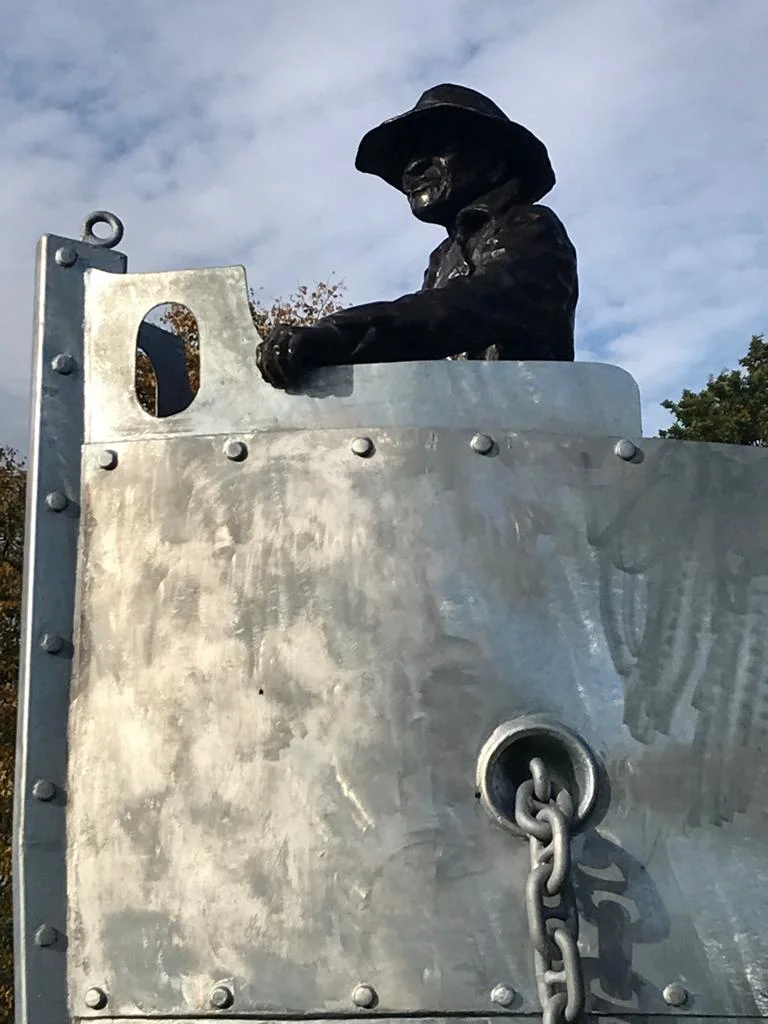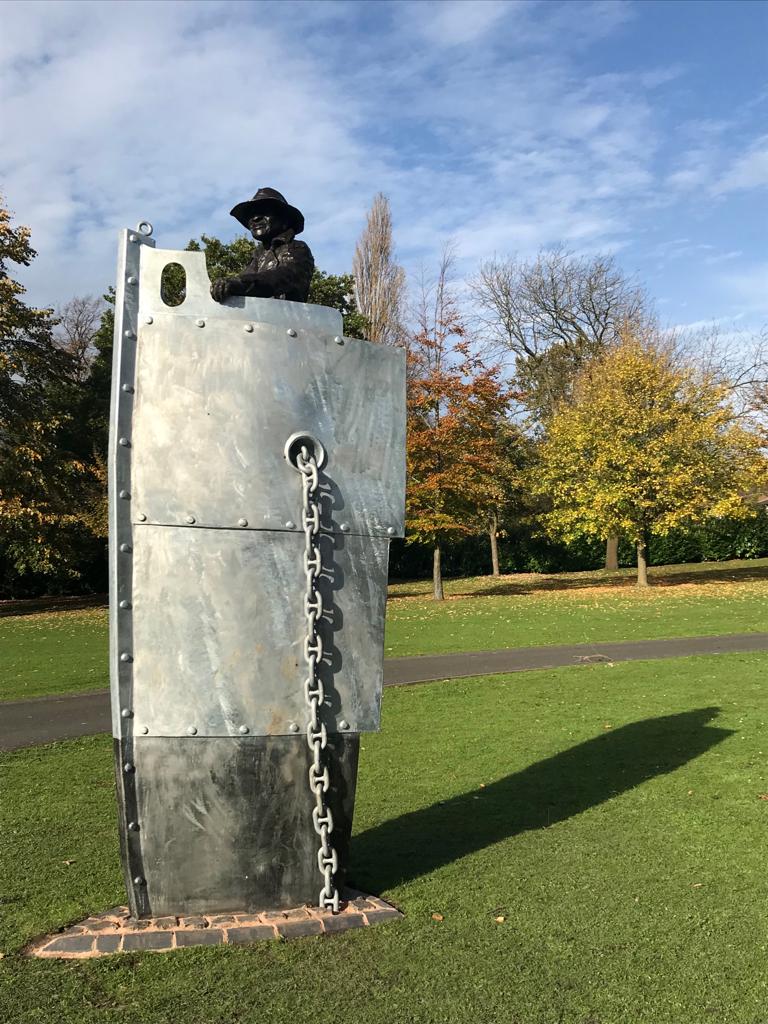THE SS JOURNEY
UNVEILING OF THE SS JOURNEY
“The SS journey is a representation of the bow of a steam ship with a passenger looking into the distance and to their future.”
The piece was inspired by the journey made by Lukes family friends who made the epic sea crossing from Jamaica to Handsworth in the 1960s, however it speaks to everyone who has come from other parts of Britain or further afield and chosen to make Handsworth their home.
The figure on the bow of the boat is cast in bronze. Hector Pinkney MBE, known to many locally as ‘Mr Handsworth’ modelled for the figure and his reputation of giving a warm welcome to young and old from all communities to the neighbourhood he so dearly loves echoes the aims of the Arts Trail.
ARTIST LUKE PERRY
Luke Perry is a sculptor, working primarily in metal work and is a Director of Industrial Heritage Stronghold, a not-for-profit company based in The Black Country. Luke’s work celebrates the rich industrial history of the region, using community engagement to shape the design and meaning of his artwork.
Q&A with Luke Perry
1) How long you have been working as an artist?
15 years professionally. But I studied Art at University. I explored a number of avenues to try and make a living.
2) Do you mainly work on your own or in collaboration with others?
I do all of the design work in collaboration with the community but I do all the manufacturing myself.
This is partly because of the joy of the job, but also it helps keep the price down and controls the cost. I also enjoy learning new skills and use these in the production process for future commissions.
There are some areas such as bronze casting where I involve others.
3) What are your main art forms, have you moved from earlier art forms and why (i.e. a little bit about your professional journey)?
I was drawn to large monuments and proposed a piece and then was challenged by the people I was lobbying to make it – so I did.
I think Public Art should show the pubic what the world is like. I was very aware that working class people weren’t represented in Public Art and this was even more significant for women and ethnic minorities.
This made me want to focus my work on representing them.
4) What attracted you to submitting a proposal for the Arts Trail?
The location. I spent some of my youth there.
The significance of Handsworth both socially, politically and culturally. I’m interested by the subject of people moving to the UK and think that it’s important to tackle ignorant politics in the UK.
5) What inspired your design?
It was at the beginning of publicity about the Windrush Scandal.
But I didn’t want it to be just about the African-Caribbean community.
The ship is a metaphor for wider migration across to the UK.
6) How long did it take you to design and also make the art work?
I came up with the loose concept quickly, for the outline application, and then a month or two to finalise the design, consulting with the community. It took 3-4 weeks working in clay, then 3-4 weeks working on the ship, then a month for the bronze casting. About 6 months in total.
Hector was an interesting way to represent Handsworth.
I didn’t want it to be about a single community, and when I met him he was such an easy choice.
7) Were there any funny or challenging things that happened during the commission? How did you resolve any problems you came up against?
I never go over budget or time. I think it’s very important to keep to them.
I’m always aware that my art is part of a bigger picture and that it’s not all about ‘me.’
8) What art work have you been producing since the HPAT and where can people see it?
Lions of the Great War in Smethwick. (10ft high bronze statue of a Sikh soldier), The Saragarhi Memorial in Wednesfield Town Centre, Forward Together in Victoria Square in Birmingham City Centre, Queen Ethlefled in Tamworth.
9) What’s your favourite piece of art work you’ve produced and why, and where can people see it?
Forward Together. It’s in Victoria Square in Birmingham City Centre until October and then is being relocated to Comore Square. Sky Arts said ‘make whatever you want to represent your community’. Which was great. I also worked with some amazing people. Plus everyone’s response to the art work has been very positive.
10) Are you working on anything at the moment, can you tell us about it?
Several! I’m working on a piece in Yorkshire about Reserve Occupations in the First World War, and particularly coalminers, nurses, munitions. A national monument to HIV and aids outside the Hippodrome. A piece about Deforestation at Dudley Zoo.
11) Do you have a website that illustrates your work?
12) Can you tell us a few quirky things about you or your work?
I really love the ‘making’ aspect of my art work. I think that if people want to make a career in art they need to enjoy using their hands, and they should get away from computer screens.
13) Do you have a favourite artist or piece of art work?
Jenny Holzer, an American artist who uses large text in public places. Barbara Kruger, another American conceptual artist, who mainly uses black and white photographs overlaid with bold red and white captions. I have a great love for Charles Sargeant Jagger, a British sculptor who fought in the First World War and sculptured many works on the theme of war. Constantin Meunier, a Belgian painter and sculpture born in 1831, who celebrated agricultural workers and labourers in the 19th century.
14) What inspired you to become an artist?
I loved making things as a child – anything! Even things like a shelf. Making things kept me out of trouble as a child. My family were all ‘makers’ – skilled craftsmen and women. However, I was the first person to do it for pleasure, not to ‘get by.’ But I was very fortunate, I had lots of support from my family, they didn’t try and dissuade me from becoming an artist. I like the idea of making things with your hands and creating something useful. I also think that if you’re going to do something, you should do it correctly. You should take your time to understand your subject; ‘pleasing the nerds’ is important i.e. people who know about the subject you’re portraying shouldn’t be able to identify basic mistakes etc.
15) What’s your favourite piece of public art in Birmingham that you would recommend people go and see and why?
The Moseley Road Baths in Balsall Heath, I love the Forward Coat of Arms – the original symbol for the Corporation of Birmingham and now Birmingham City Council (originally designed in 1838). It has two figures, a working-class man (a blacksmith) and a woman (holding a book and painter’s palette) representing art. This kind of imagery in Victorian times was very unusual.
I also like the ‘Industry and Genius’ sculpture outside Baskerville House in the city centre. John Baskerville is famous for making the printed word cheap and therefore accessible to the general public. The sculpture is five columns of Portland Stone, with bronze letters spelling VIRGIL, the Roman Poet.
